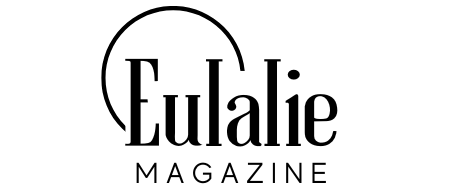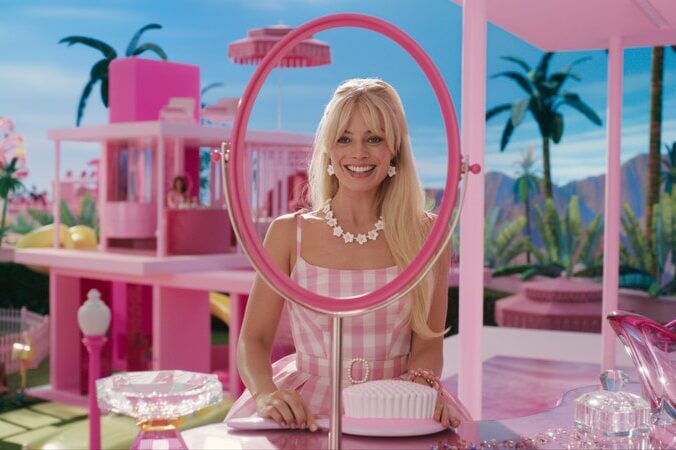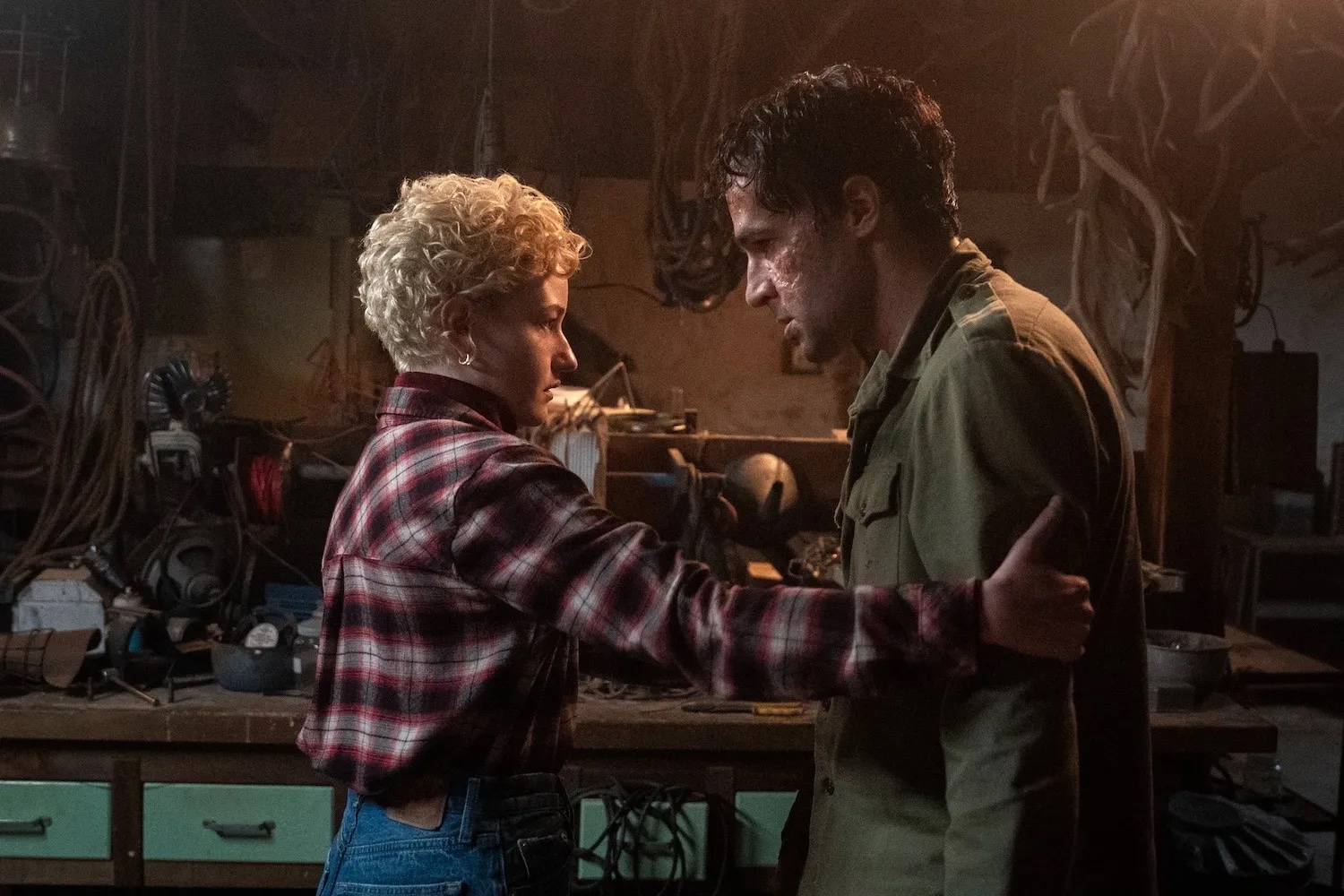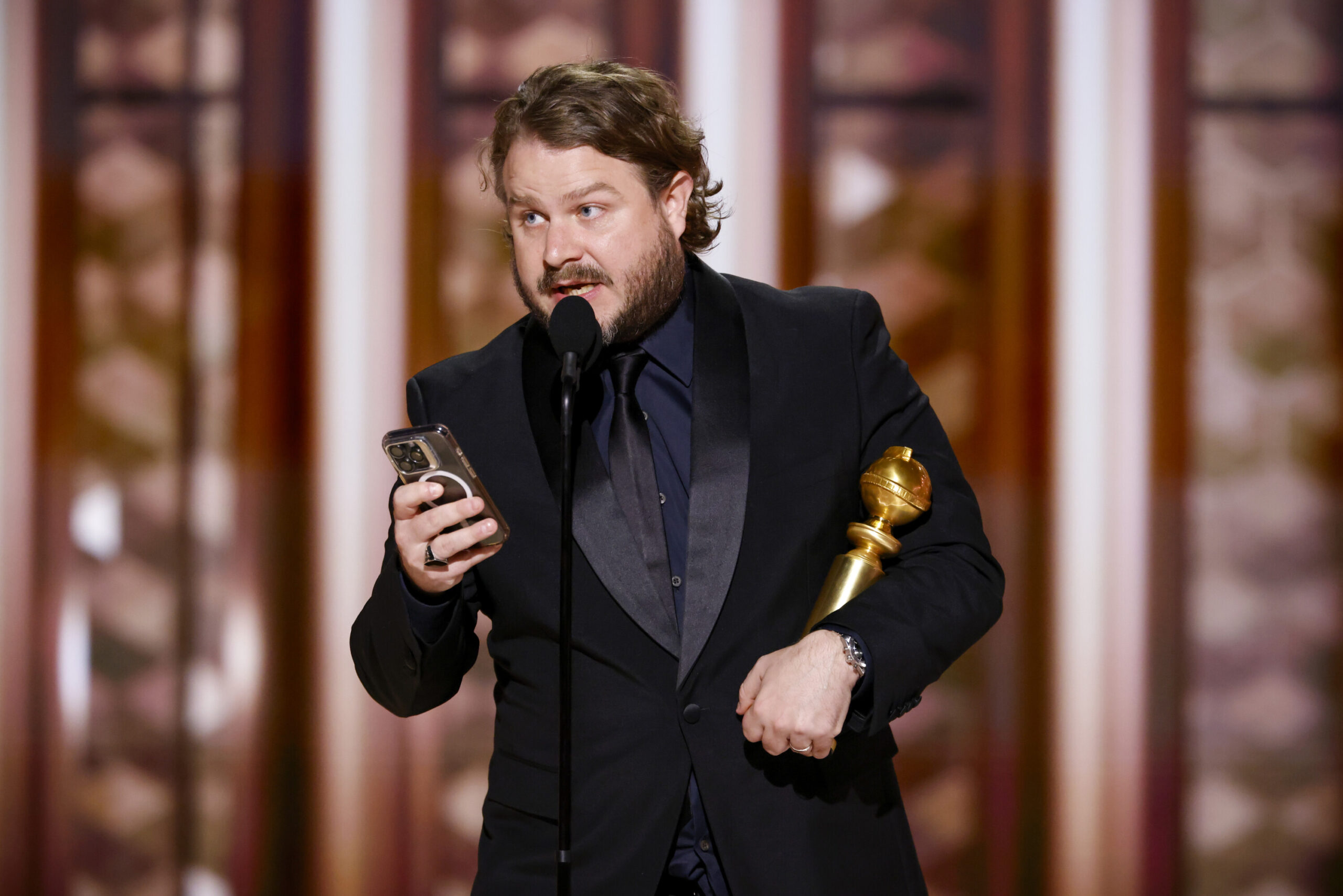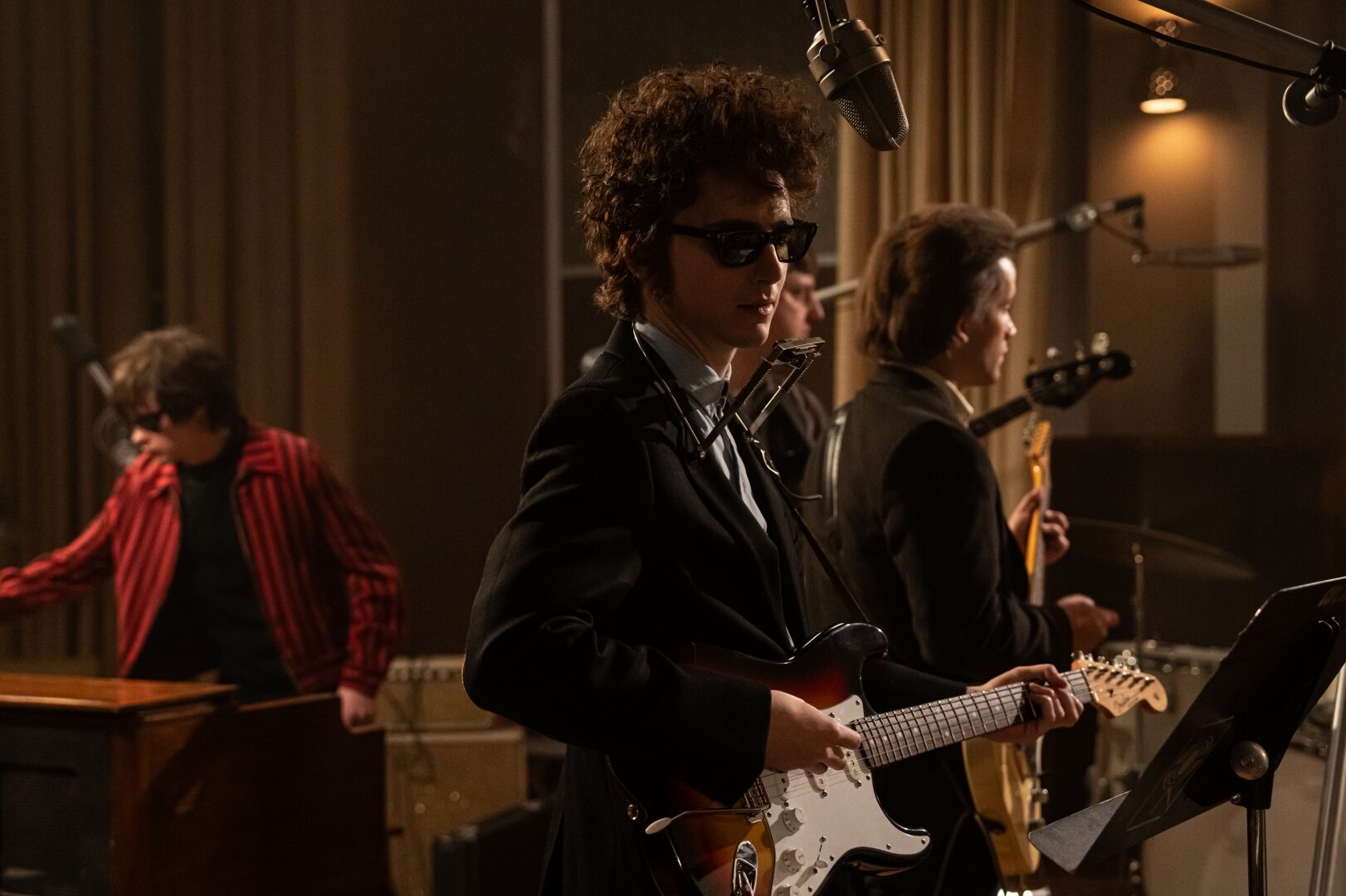To critique Barbie as one singular performance is to do this film a disservice.
Barbie takes its audiences on many unexpected rollercoaster rides during its refreshing runtime, some exhilarating and some bewildering. Like the Mattel toy that rallied generations of women, this film is determined to be a trailblazer in the weirdest, most wonderful ways you could imagine.
Barbie does stumble trying to find her bearings in this high-octane child-like satire, but all the ways this comedy sees its vision through are far more compelling.
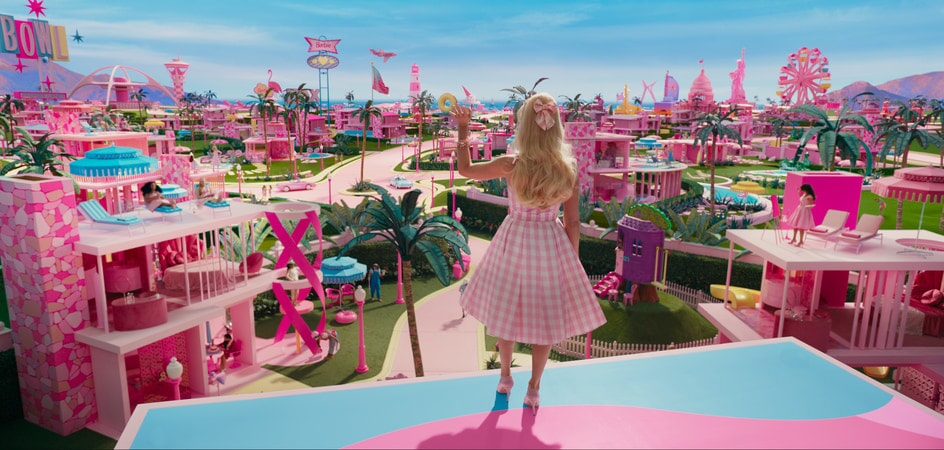
As a society, we must move away from saying films like Barbie can only exist in the good or bad because they contain far more nuances than those labels afford.
From the jump, Barbieland materializes as a masterpiece of plastic visuals and vibrant soundscapes. The practical sets and effects are the real champion of this exquisite film, stealing the show with every rollerskating montage and Matchbox Twenty beach serenade. These incredible tablo shots of different transportation elevate the vague lore of how Barbies get to the real world.
Margot Robbie’s Barbie floats through this film with the perfect mixture of warmth, humility, and swagger. She effortlessly blends into the dreamhouse scenery to let other actresses take the spotlight, and her range drives home the emotional undertones beneath the plastic doll persona. She is the lead we deserve and the lead we got.
Backed by powerhouse performances from the entire female ensemble, Robbie is complimented by America Ferrera’s heartbreaking exploration of motherhood and elevated version of Kate McKinnon’s Ghostbusters character. The film offers many fun, fleshed-out Barbie characters to delight.
From god-tier set design to magical costuming to emotional womanhood comparisons, Barbie is a healing cinema experience that explores the psyche of not being enough while delivering an infectious performance that makes us feel like we could do anything.
Duality of the Doll
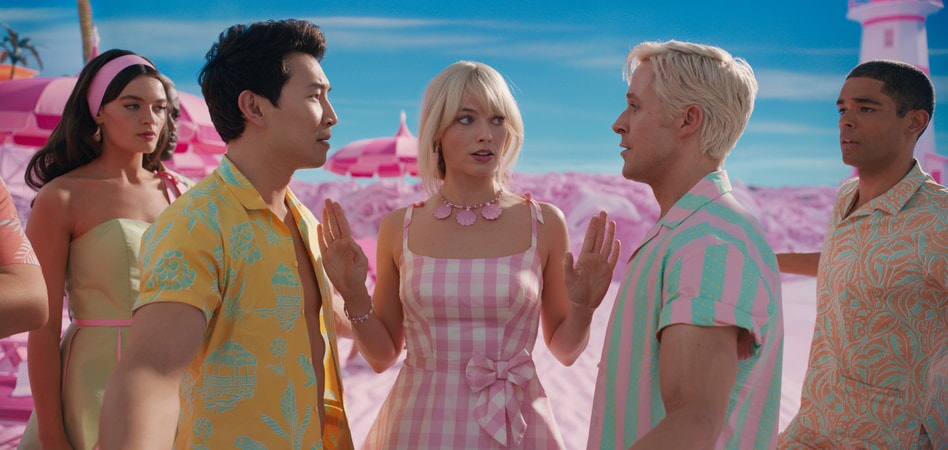
Barbie‘s artificial fantasy comes at the cost of fluidity. The movie neglects its pacing for shiny new storylines, creating cracks in its beautiful facade.
The script plays out like the third act of playtime, and I do not doubt that the zany, child-like thought process was always Greta Gerwig’s intent. While I tip my hat to Gerwig for making Barbie feel like it has a child’s grubby little fingers all over it, the chaotic approach to worldbuilding presents a clunky overall product.
Additionally, the intersections between women’s issues and the Ken takeover are not as seamless as they could be, with threads of feminist wisdom introduced without carrying into the next thought. It produces a more general over-arching feminist approach that is less authentic than the humanity undertones that take center stage in the final act.
That said, all of these gripes are with pacing. My expectations for a methodical Little Women-esque contemporary story of womanhood are checked at the door when it becomes clear this is not that kind of movie. And good, because a Bridesmaids/The Lego Movie hybrid comedy where Michael Cera’s Alan gets into a violent street fight with construction workers is far better.
Barbie is only guilty of having too much aimless fun, and that’s hardly a crime to be condemned for.
The Kismic Kenergy
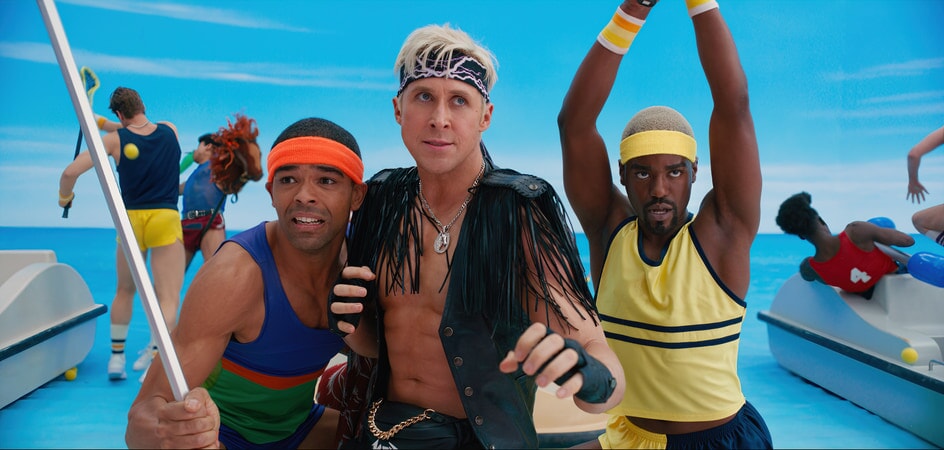
You cannot stare directly into the eyes of this film’s excellence without talking about the Kens.
Gerwig does a fantastic job of comedically placing the Kens throughout the film as accessories to serve the Barbie lore and the sad revelations of boyhood. Her choice to draw a conclusion demonstrating the Barbie matriarchy is equally harmful as Ken’s patriarchy drives home the expert handling of the film’s gender-swapped experiments.
Ryan Gosling goes above and beyond with Ken. He gives himself entirely to the ridiculous camp dialogue. From the deadpan delivery of “dojo casa house” to the interactions where he channels a disgruntled toddler, Gosling becomes the most unserious pick-me comedic powerhouse.
He never once gives the impression that what he is doing is ridiculous, which affords this female-led film valuable creditability in its fight for a voice.
Meanwhile, Cera’s Alan helps break up the Kenergy with some genuinely unsettling intensity. I also particularly love the scenes where Kingsley Ben-Adir’s Ken is aggressively dry heaving or holding his little ice cream cones.
In terms of using people as plot tools, the Kens more than fulfill their destiny. They do beach, and they do it damn well.
Exploring Female Excellence

This is no more a perfect movie than Robbie’s stereotypical Barbie is a perfect idea.
However, Ferrera’s Gloria acknowledges in her triumphant monologue that women are held to higher standards of excellence than men. I think the instinct is to do the same with Barbie.
Why else would we condemn this film for delivering an enjoyable, all-be-it-flawed piece of entertainment? Many men-helmed films as fun and flawed as this exist without issue. It should be okay for women-led movies to fall short of excellence because that achievement does not exist as easily for us as it does for male-directed films like Oppenheimer.
I don’t know if Barbie is the masterpiece so many women champion it to be or if we are just excited to have something unapologetically ours. However, I know how it has made this community of shunned movie consumers feel.
Barbie carved out a space in cinema so prolific and untouchable women could indulge in the wave of pink promotional campaigns without the usual onslaught of review bombing and online harassment. Women felt safe enough to flood the cinemas in pink costumes without shame and were rewarded with a good film.
To rally behind a film made by women for women and be rewarded with a likable outcome goes beyond onscreen triumphs.
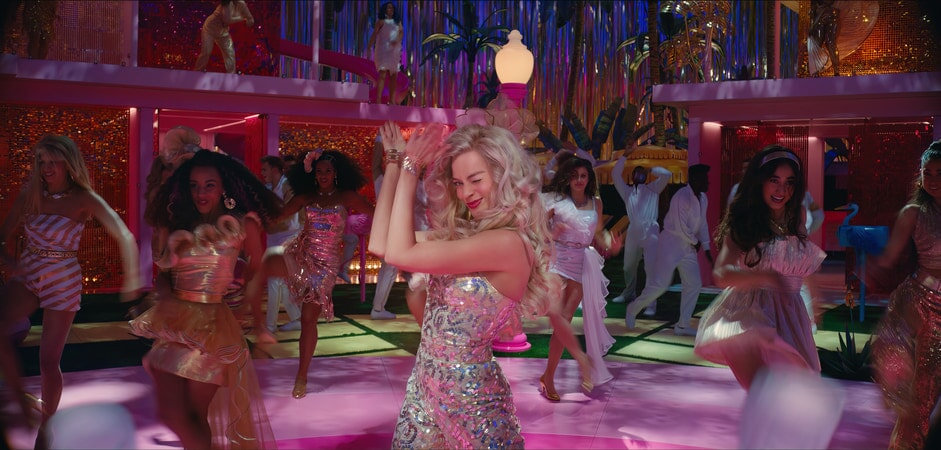
After attending an early screening of Barbie, I walked into the bathroom to find women standing in front of the mirrors with the biggest smiles on their faces as they complimented each other’s outfits. Strangers shouted their praise for the film over bathroom stalls, all sense of boundaries gone in the name of something so unapologetically female it had to be discussed in a theatre bathroom as we touched up our lipgloss.
If you are a woman wearing pink in public these days, chances are other women will approach you to discuss this movie — and that is the triumph we need to acknowledge.
In a world where girls are encouraged to avoid pink, Barbie transforms a color into a powerful plot tool. As such, this project’s themes of womanhood and power allow women to feel validated in film spaces. Its universal storytelling unites women with a movie experience that takes them seriously while ensuring that women can still make meaningful art that is utterly absurd at the same time.
No, this satire is not always the picture-perfect project of excellence. But it is a summer blockbuster event that delivers immense joy at a time when cinema should be doing just that.
That should be enough — women making movies we can enjoy should be enough.
—
![]() Follow us on Twitter and on
Follow us on Twitter and on ![]() Instagram!
Instagram!
![]() Like us on Facebook!
Like us on Facebook!
https://eulaliemagazine.com/68/barbie-announces-world-tour-and-shares-new-stills-from-movie/
